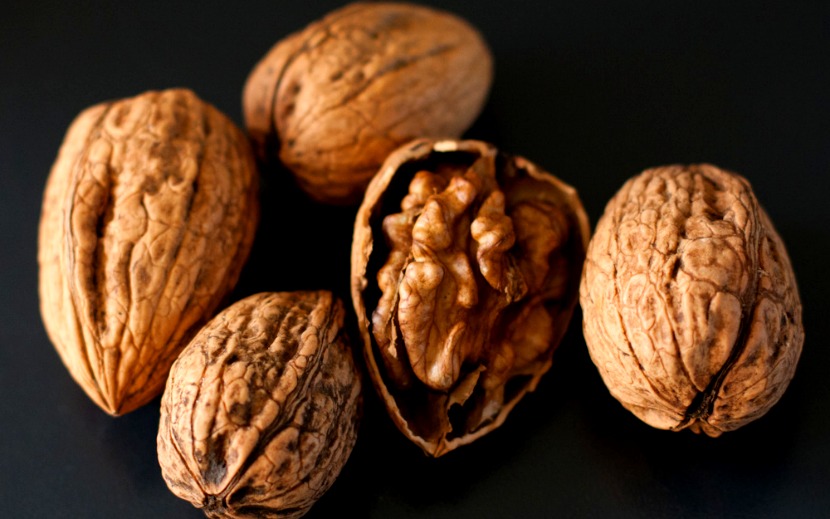How We Do: Serbian Christmas on 89th & First

Our beloved Mash-Up Maja Svrakic immigrated with her family to St. Louis, Missouri from Belgrade, Serbia when she was 16 years old. Today, she works as a surgeon and makes her home on the Upper East Side of New York with her Indian-American husband, Naveen Gumpeni — a radiologist and DJ from Syosset, obviously — and their nine-year-old chocolate lab, Julius. Maja exemplifies that old axiom, “You can take the girl out of Serbia, but you can’t take the Serbia out of the girl.” (That’s an old axiom, right?) Here, she shares the traditions of Serbian Christmas and how she translates Serbia in New York. Friends peep like chickens! Men throw walnuts! Want to read how communism effected Christmas?
Serbian Christmas Eve (badnye veche) is January 6, and Christmas Day (bozhich) is on January 7. Other countries recognize these dates as well. The Serbian Orthodox Church is a part of Eastern Orthodox Christianity. It’s special in that at the time of conversion to monotheism most Serbs were illiterate and set in their ways of country life where superstitions and belief in “house ghosts” and various “family protectors” and “harvest gods” were quite strong. The compromise was to sprinkle a touch of paganism into the Russian-influenced orthodoxy. So every family adopted a certain saint protector and the saint’s day, or slava, is probably the most important holiday in a Serbian household. Every family likes having their own special day!
On this day the mother and father wake up early, sneak up on the kids and tie them to the bed before they wake up, with rope, scarves, or belts.
But celebrations start three weeks before actual Christmas. The third Sunday before Christmas is detinytzi, which roughly translates to Children’s Day. On this day the mother and father wake up early, sneak up on the kids and tie them to the bed before they wake up, with rope, scarves, or belts. The only way they get untied is if the children were smart enough to pre plan and have gifts for the mother and father under the bed as ransom. Classically children hide cookies or sweets, but I used to hide a pack of cigarettes and give it to my mom. This was by far our favorite holiday and I cannot wait to have kids to be able to do this.
The second Sunday before Christmas is materitze or Mother’s Day. The same celebration is repeated as above except it’s the kids and dad that plot to tie mom to the bed in the morning. The final Sunday before Christmas is otzi, or Father’s Day, when the kids and mom tie dad to the bed.
This particular part of the holiday was easy to celebrate without making an obvious big feast for Christmas, so most families kept celebrating the three Sundays throughout communism.
Let me explain the tangent. Communism didn’t allow for Christmas celebrations and neighbors who reported on their neighbors would get rewarded by government officials. So many families didn’t celebrate Christmas in any obvious way during communism, but you could always have Children’s, Mother’s and Father’s days. Growing up, nobody talked about Christmas because our parents told us not to. But Serbian children in the cities were kind of upset that all Western children had Christmas. So the communists came up with a secular western Christmas (no religious tones, just Santa Claus and decorated tree) to be celebrated on the calendar new year. So the western Christmas tree is called “New Years tree” and Santa comes in the night between December 31 and January 1.
Back to Christmas. The day before Christmas Eve you fast, meaning no animal products apart from fish, so no dairy, butter, eggs, or meat [Editor’s note: We could probably manage this diet once a year]. The evening feast consists of fish, grains, pickled veggies, grape leaves with rice, and dates for dessert. There’s also a tray of fasting-friendly goodies, like dried dates, figs, apricots, prunes, hazelnuts, walnuts and almonds in the shell. Whoever is the eldest woman living under the roof of the hosting party, or domachitza, is the “receiver.” The eldest male attending (may or may not be the host of the event) is “the bearer,” or polozhaynik. Everyone else in attendance are “children and chicks,” or “detza i pilichi”.
Before the food can be eaten, the polozhaynik walks outside the front door, where everyone else lined up behind him in order of seniority. The domachitza stays inside. The polozhaynik, who’s holding four walnuts and a bundle of hay (more on that later!) knocks three times. Domachitza opens the door, and polozhaynik says: “Dobro veche i srechno badnye veche,” or “Good evening and happy Christmas Eve.” The domachitza repeats it back to him and then polozhaynik is invited to come in. At this point the children and chickens “peep” (they say in high tone “piyu piyu”) over and over. The domachitza throws wheat and rice grain on the entire posse.
The walnuts are never to be moved! They are to appease the house gnomes or ghosts.
The polozhaynik then walks to the step of the “main room” and throws a walnut into the north, then south, then east then west corner of the room. As he is doing this he says for each corner: #1 “In the name of the father,” #2 “And son,” #3 “And the Holy Ghost” #4 “Amen.” The walnuts are never to be moved! They are to appease the house gnomes or ghosts. The polozhaynik then crosses himself everyone else follows. He lays the hay under the dinner table and the feast may begin. It should stay there until New Year’s Eve which is the following week. There are usually very modest presents for children and chicks prepared by domachitza. Classic gift is an orange and some candy wrapped in a bag with tinsel.
Christmas morning, the domachitza bakes bread with a coin in it, called chesnitza. She divides it into as many guests that will be eating it plus an extra piece for the “house.” People say to each other “hristos se rodi,” and the reply is “va istinu se rodi” (“Christ is born”; “Indeed he is”). The polozhaynik then takes the hay and swirls it around the fire making it burn on the ends and chants “koliko varnica toliko….” (“As many sparks there are, may there be…”) and each person takes turns saying what they wish for, such as money, love, or happiness.
Then they break the bread and whoever has the coin will have a prosperous year. If it’s the house then the household will be prosperous.
And that’s Serbian Christmas!
I modify with setting the hay on fire over a New York apartment window with a lighter and a cup of water on the windowsill.
I love the entire holiday and have forced my college roommates, boyfriends and now husband to celebrate with me. Everyone is super enthusiastic and every year I write out the words of what one needs to say. Last year, the oldest man at our apartment was our friend Eric, an Italian American. He took his role so seriously that he took time to rehearse the sayings. It was funny to watch everyone (Serbian Christmas is quite popular now among our group of friends) figure out how old everyone is and which chicks in the back will get hit hardest with the rice/grain thrown on them. Naveen for some reason invented the rule that you had to throw walnuts turned away from the target. Maybe next year this turns into blindfolded and spinning. I modify with setting the hay on fire over a New York apartment window with a lighter and a cup of water on the windowsill in the evening instead of the morning. I also do the bread in the evening because people work the next day.
As for our walnuts, the dog, of course, goes crazy with the walnut chasing and if one out of four stays untouched until the end of the evening it’s a miracle. Then our Mexican housekeeper finds them and puts them in various places (glass jar with matches, medicine cabinet, bookcase). I haven’t explained the walnuts to her.
But I point them out to Naveen in every Serbian household we go to.





